At-Home Back Strengthening Exercises: Improve Posture and Relieve Pain
Apr 03, 2023 by Jessica Baron
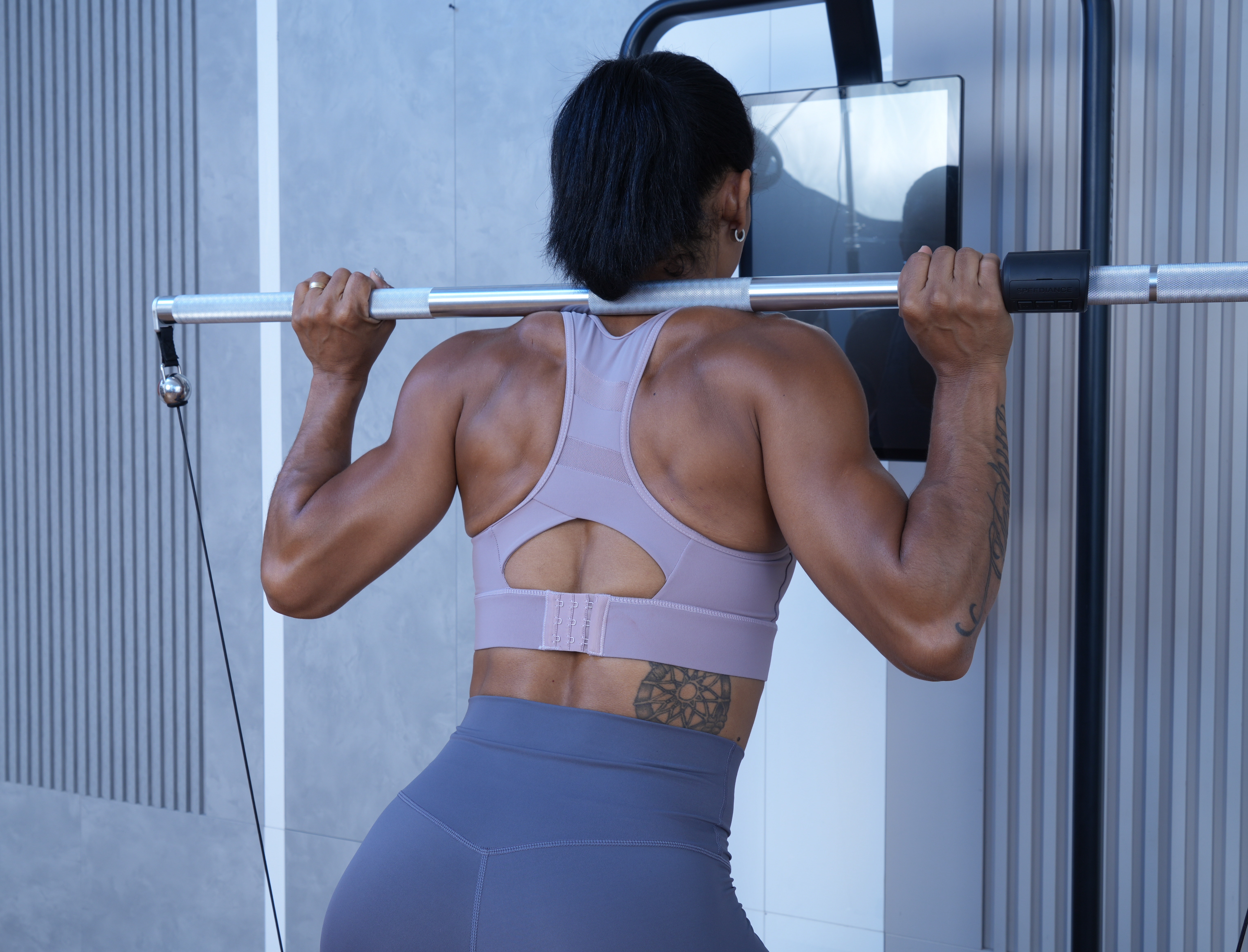
Have you ever suffered from back pain? If you do, you will know how excruciating it is. Actually, studies showed that back pain is a common problem affecting 60% to 80% of adults in Western countries at some point in their lives. Having some back pain relief exercises up your sleeve can help you avoid becoming a statistic.
According to the American Physical Therapy Association, our sedentary lifestyles and prolonged slouching increase the compressive forces on our spinal discs, increasing the risk of developing low back pain. In other words, while we might feel relaxed at the moment, sitting in meetings, in the car, on the couch, and at our desks all day is wreaking havoc on our spines in the long term.
The good news is that focusing on activities that strengthen the back and core muscles can help control back pain and improve our flexibility.
Below, you’ll find advice on the 10 best at home back strengthening exercises you can do to relieve back pain and improve posture.
"If you’re interested in being fit and healthy, you want to strengthen all the body’s muscles. Many people overlook the lower back, though. The focus of strength training is often on legs, glutes, abs, and arms."
- International Sports Sciences Association
Overview of Back Muscles
Latissimus dors (lats)i: This large muscle stretches along the sides of the back, from the mid-back down to the lower back. It is the upper body's largest muscle.
Trapezius (traps): Located on the upper back and neck, these large, triangular-shaped muscles extend from the base of the skull to the middle of the back and outward to the shoulders.
Rhomboid: These two muscles are located in the middle and upper back, between the shoulder blades. They attach to the inner shoulder blade.
Rear (Posterior) Deltoid: This muscle is located at the back of the shoulder joint and inserts into the upper arm bone to help move the arm backwards and away from the body or to rotate it outward.
Teres Major: This muscle is located in the upper back (posterior part of the shoulder). It starts in the lower part of the shoulder blade and connects to the upper part of the upper arm bone
Erector Spinae: This group of muscles runs along the entire length of the spine to stabilize it and maintain good posture.
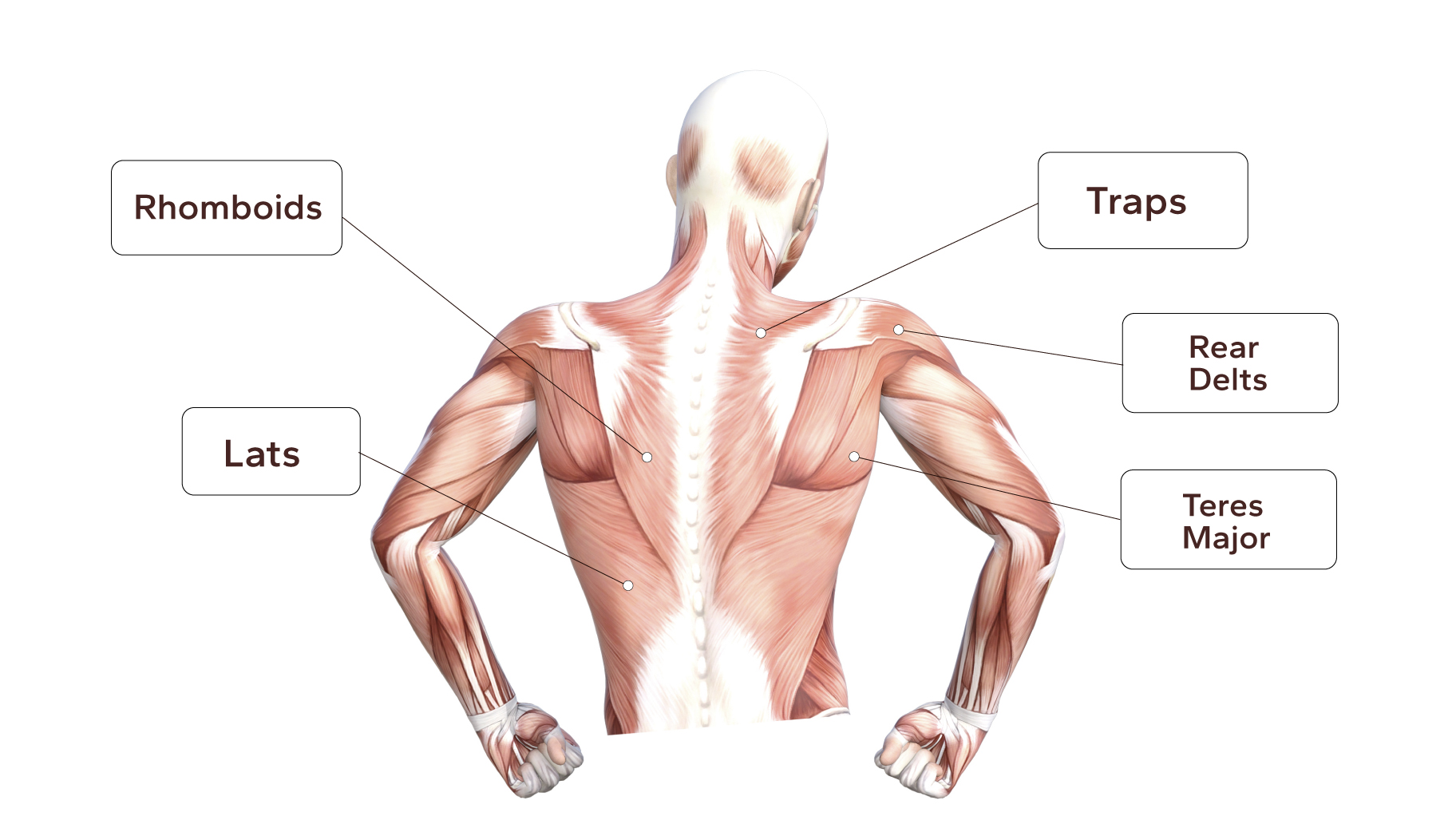
No-Equipment Back Exercises
Superman
Why:
The Superman exercise is an effective way to strengthen your back and improve posture by targeting your entire posterior chain, which includes the muscles that run along your spine and support your lower back.
Muscles targeted: This primarily targets the traps, but engages the erector spinae muscles, rear deltoid, and Latissimus dorsi (lats).
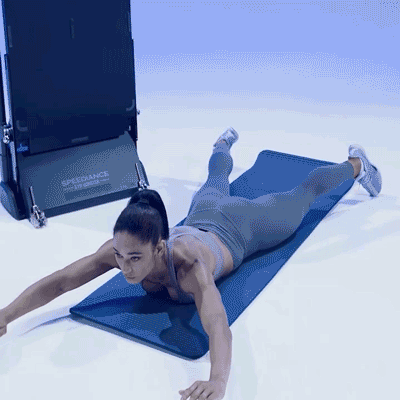
How:
- Lie facedown on the mat. Exert pressure on the balls of your feet against the ground.
- extend your arms overhead to form a Y shape.
- Slowly raise both your upper body and arms off the floor.
- Keep your feet on the floor, and engage your core and glutes throughout.
- Hold this position for a few seconds at the top, then lower back.
Bent Over T-Raise
Why: Bent Over T-Raises target the lower and upper back. They can help you develop a strong, stable back and improve your upper body strength and posture.
Muscles targeted: It primarily targets the traps, but also engages the glutes, shoulders, and hamstrings.
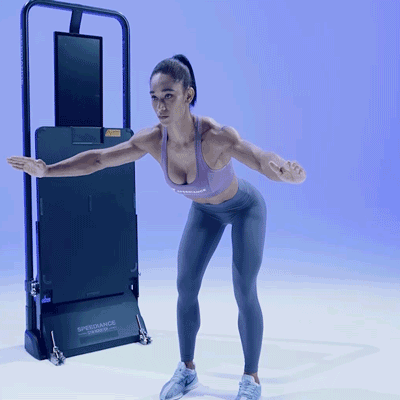
How:
- Stand with feet about hip-width apart, and knees slightly bent.
- Hinge at the hips, and open your arms to the side, at shoulder level.
- Slowly raise your arms up and down, like you are flying. Engage your shoulder blades and upper back muscles.
- Engage your core and hamstring to stay balanced.
- Keep the chest open and keep your back straight throughout the movement.
Superman W raises
Why: “This variation is ideal for someone with neck or shoulder pain,” says Speediance's coach Jenny.
Muscles targeted: This movement targets the muscles along the back of your body. These include the rear deltoid, erector spinae, and Latissimus dorsi (lats). You will also engage your glutes and hamstrings.
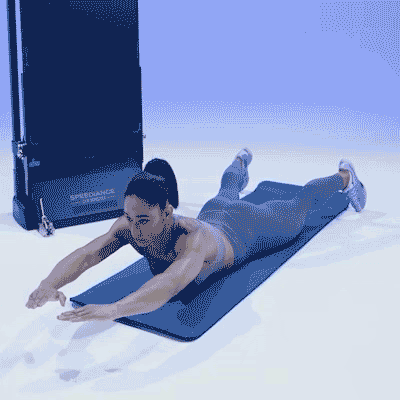
How:
- Lie facedown on the mat with your chest off the ground. Keeping your head in a neutral position, press the balls of your feet into the floor to engage the muscles in the back of the legs.
- Extend your arms straight in front of you at shoulder level. Keep the shoulders down and away from the ears.
- Bend your elbows backward and downward at a 90-degree angle at your sides, in a W shape.
- Gently squeeze and retract your shoulder blades together. Don't arch your back too much.
- Engage your core, rhomboid, and middle trapezius muscles.
Standing Superman
Why: “I enjoy performing a few sets of the Superman series for my warm-up. It will truly ratchet up your muscles for your next routine,” said Jenny.
Muscles targeted: This will target your traps, erector spinae, rear deltoid, lats, glutes, hamstrings, upper back, shoulders, and arms.
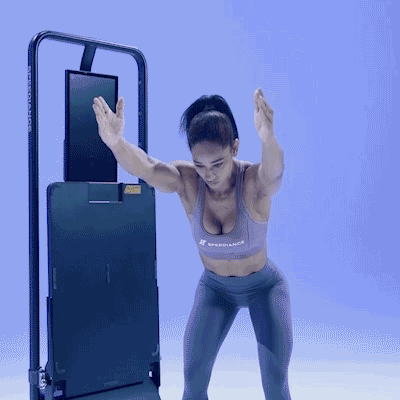
How:
- Stand with feet shoulder-width apart, and keep your knees bent slightly.
- Hinge at the hips, and make your arms extended overhead.
- Keep your body still, and slowly lift your arms up and down.
- Engage your core and hamstring to stay balanced.
- Keep your chest open and your back upright throughout the movement.
Top Speediance Exercises for a Stronger Back
Lat Pulldown
Why: The lat pulldown is a fantastic exercise for developing a strong back and for toning the Latissimus dorsi, the largest muscle in the back, which helps with proper posture and spinal stability.
Muscles targeted: The Latissimus dorsi (lats) is the primary muscle targeted. This exercise also engages the trapezius, rhomboids, posterior deltoids, biceps, and forearms.
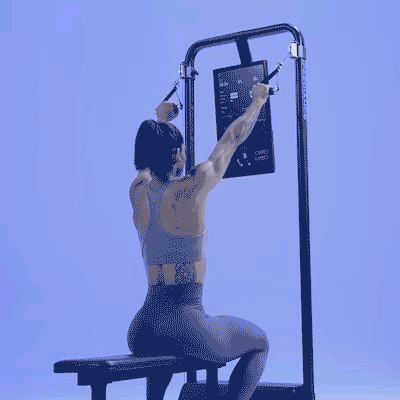
How:
- Anchor the pulley to the highest position with two handles attached.
- Grab the handle with your hands and lower yourself on the bench.
- Drive the elbows down, pointing toward the floor, to pull the handle toward your chest.
- Squeeze your lats and engage your core throughout the move. Keep your torso straight, and slightly lean yourself back.
- Return to the straight arm with nice control and repeat.
Wood Chop
Why: The twisting motion of the wood chop exercise ensures you engage the core, arm, and back muscles, and it can improve spinal rotation and mobility. This is a good choice for a full-body exercise, though it's crucial to maintain good form. According to the American Council on Exercise: "The wood chop is a functional, yet advanced movement that needs to be learned in three stages. Stage 1: Spiral rotation of the arms Stage 2: Spiral rotation of the arms with hip rotation and flexion (bending) Stage 3: Full wood chop with spiral rotation of the arms, hip, and torso, and hip flexion (bending)."
Muscles targeted: The wood chop primarily targets the oblique muscles (located on the sides of the abdomen). It also engages the muscles of the back, shoulders, and arms to boost overall strength and power.

How:
- Attach the handle to the cable pulley at knee height.
- Stand perpendicular to the cable machine and grab the handle with both hands.
- Hold the handle with arms straight out in front of you.
- Twist your hips and torso to pull the cable diagonally across your body, bringing the handle up to the outside of your opposite shoulder.
- Keep your arms straight and your core engaged throughout the movement.
- Slowly reverse the movement, returning to the starting position with control.
- Repeat the movement for the desired number of repetitions on one side before switching to the other side. This exercise mimics a chopping motion and targets the oblique muscles, as well as other muscles in the back, shoulders, and arms.
Cable Bent-Over Row
Why: The cable bent-over row engages multiple joints to improve overall upper body strength and coordination. It's a great exercise for developing core strength and stability.
Muscles targeted: The cable bent-over row primarily targets the muscles of the back, including the rhomboids, trapezius, latissimus dorsi, and erector spinae, making it one of the most effective exercises for building a strong back.
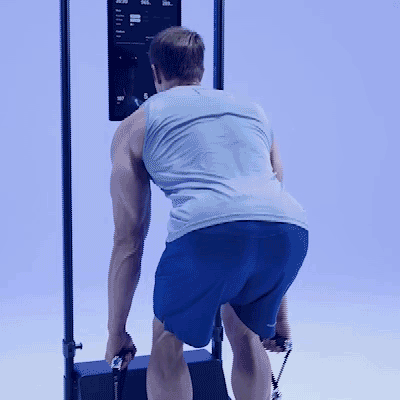
How:
- Attach two handles to the pulley and lock it to the platform end.
- Stand with your feet shoulder-width apart, put a slight bend in your knees, and engage your core.
- Hold a handle in each hand with an overhand grip facing your legs.
- Hinge at the hips until your torso forms a 45-degree angle with the platform.
- With your elbows at a 90-degree angle, pull the handles up toward the ceiling, squeezing your shoulder blades together at the top.
- Return to the starting position and repeat.
Deadlift
Why: The deadlift targets multiple muscle groups in the body. By lifting heavy weights from the ground, the deadlift is used for building strength and muscle mass.
Muscles targeted: The deadlift primarily targets the glutes, hamstrings, lower back muscles, and core.
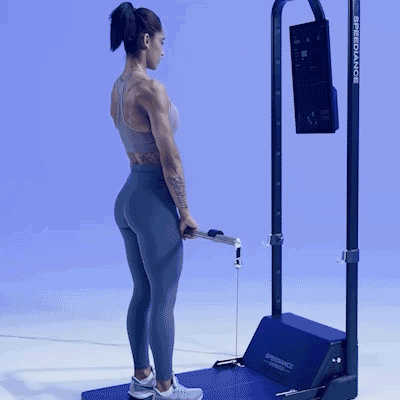
How:
- Lock the pulley to the platform end with the barbell attached.
- Stand with feet shoulder-width apart, knees with a slight bend, and toes slightly pointed outward.
- 3. Hinge at the hips, reaching down along your thighs to pick up the barbell. Keep your chest lifted and back straight, holding the bar with an overhand grip.
- Keep your chest up and your back straight while lifting the bar off the ground. Press through the heels.
- Once the bar reaches your knees, straighten your hips and knees to stand up tall.
- Reverse the movement to slowly lower the bar back to the ground. Keep your back straight and your core engaged throughout the exercise.
Reverse Fly
Why: The reverse fly can help strengthen the muscles in the upper back and shoulders and improve posture. By pulling the arms out to the side, you'll engage the muscles of the back to improve upper body strength and posture while reducing the risk of developing rounded shoulders and a hunched back.
Muscles worked: This exercise primarily targets the posterior deltoids, rhomboids, and trapezius muscles of the upper back.
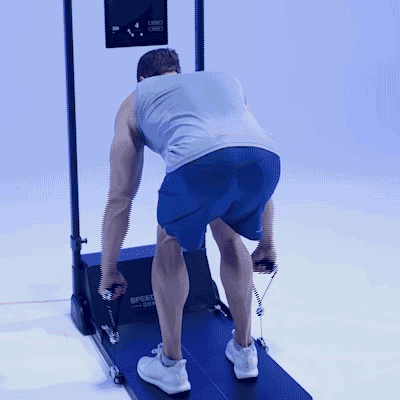
How:
- Lock the pulley to the platform end with two handles attached.
- Holding a handle in each hand, hinge forward at your hips until your torso forms a 45-degree angle with the floor, palms facing your body.
- Bend your elbows, and lift your arms upward and outward.
- Engage your core, squeezing your shoulder blades at the top.
- Return to the starting position with nice control.
- Complete 4–5 sets of 8–12 reps for muscle growth.
The Bottom Line on Home Back Strengthening Exercises
Regularly practicing at-home back-strengthening exercises can improve your posture and relieve back pain. Incorporating these exercises into your daily routine can strengthen the muscles that support your spine, increase flexibility, improve posture, and reduce discomfort so you can enjoy a more active life.
Before starting any new exercise regimen, consult a healthcare professional, and always listen to your body to avoid injury.
